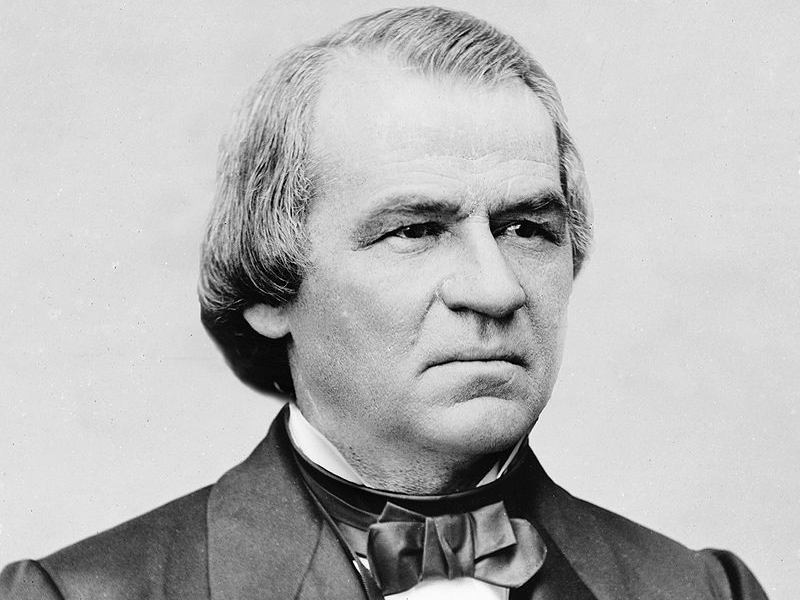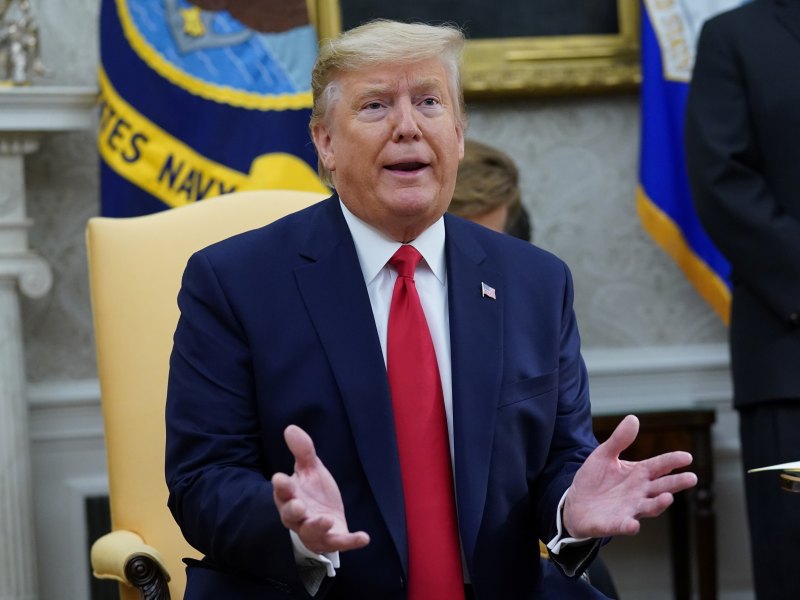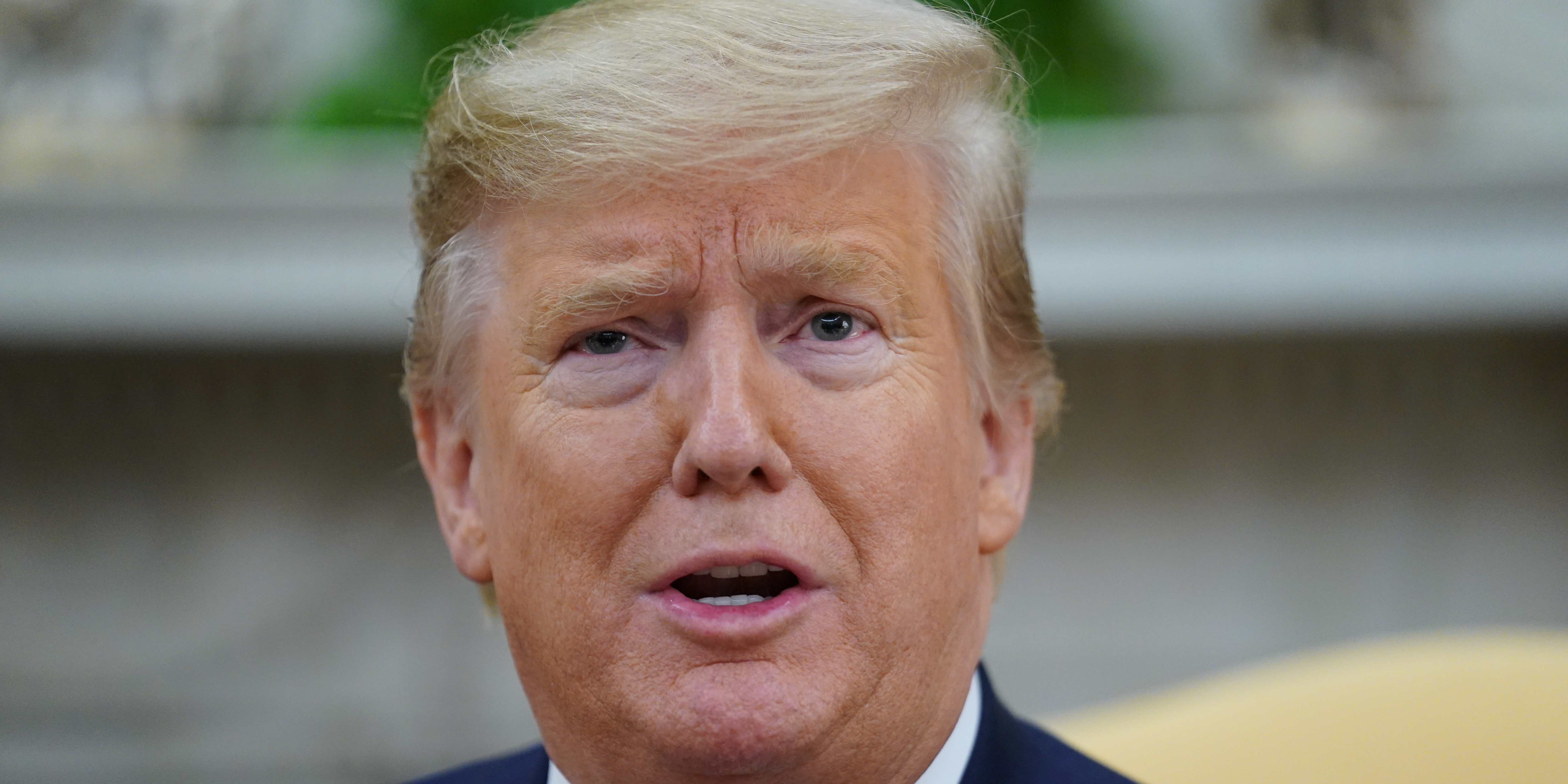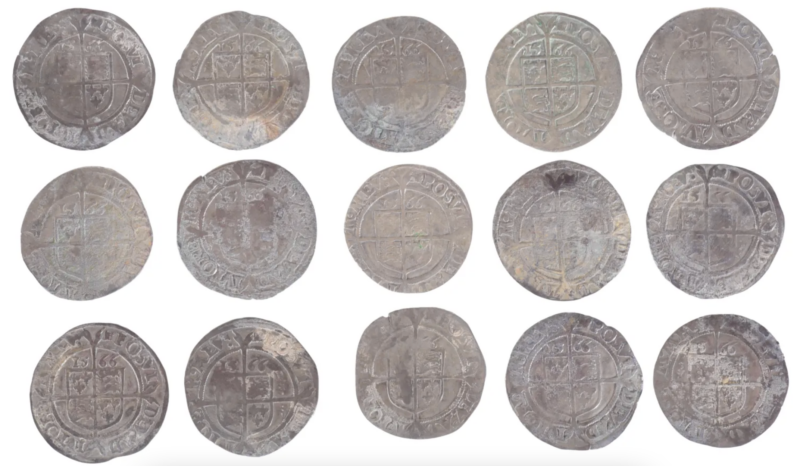- President Donald Trump was impeached by the House of Representatives on December 18, charging him with two counts: abuse of power and obstruction of Congress.
- The Senate acquitted him on both articles on February 5. No sitting president has ever been convicted.
- Only three US presidents have faced impeachment before him – Andrew Johnson in 1868 and Bill Clinton in 1998 were both impeached, while Richard Nixon resigned before he could be impeached in 1974.
- Here’s how the process went for them and how it compares with today.
- Visit Business Insider’s homepage for more stories.
President Donald Trump became the third president in the history of the United States to be impeached.
The House of Representatives made the decision in a historic vote on December 18, impeaching Trump on two impeachment articles – one charging him with abusing his office, the other charging him with obstructing Congress.
These were based on Congress’ investigation into whether Trump attempted to get Ukrainian President Volodymyr Zelensky to investigate the Democratic presidential candidate Joe Biden and his son.
On Wednesday, the Senate voted to acquit Trump, voting largely along party lines.
Impeachment is a power Congress has to remove presidents or other federal officials from office if enough lawmakers find that they have committed "treason, bribery, or other high crimes and misdemeanors."
Three other presidents have faced impeachment proceedings, but only two have been successfully impeached.
In 1868, Andrew Johnson was impeached, charged with breaching the Tenure of Office Act, but the Senate narrowly acquitted him by one vote. In 1974, Richard Nixon faced an impeachment inquiry, but he resigned before the House could impeach him. In 1998, Bill Clinton was impeached, but he was acquitted by the Senate.
Here's how the process went for the three presidents who were impeached.
Andrew Johnson

Johnson was the first sitting president to ever face impeachment proceedings.
It all began when he removed his Secretary of War Edwin Stanton from office in 1867, which breached the Tenure of Office Act. The law meant he couldn't fire any important officials without first getting Senate's permission. At first, he had suspended Stanton and replaced him, but when Congress intervened and reinstated Stanton, Johnson fired him on February 21, 1868.
Three days later, on February 24, 1868, the House of Representatives impeached Johnson by a vote of 126-47. The House said he'd violated the law and disgraced the US Congress.
From March to May 1868, over 11 weeks, the Senate tried Johnson's case and finally voted to acquit him. The vote was 35 guilty to 19 not guilty. One more guilty vote would have met the required two-thirds that's necessary for a conviction.
Bill Clinton

Clinton was the second president to face impeachment proceedings. From early 1994, he was dealing with scandals, beginning with a financial investigation known as "Whitewater."
That same year, Paula Jones sued him, accusing the president of sexual harassment. Clinton argued he had presidential immunity from civil cases, but in 1997, the Supreme Court rejected his argument.
In January 1998, during Jones' case, Clinton denied under oath that he'd ever had an affair with the White House intern Monica Lewinsky. But news of Clinton's affair with Lewinsky got out.
In July 1998, Clinton testified about the allegations that he'd committed perjury by lying about his affair with Lewinsky. And by August, he'd acknowledged having an affair with Lewinsky.
Lewinsky had also recorded conversations of her talking about the affair, and the transcripts of the conversation went public in October 1998.
On October 8, 1998, just days after the tapes were released, the House of Representatives voted for impeachment proceedings to begin against Clinton. In a report released in September by the independent counsel Kenneth Starr, there were 11 grounds for impeachment.
On December 11, 1998, the House approved three articles of impeachment along party lines - charging Clinton had lied to a grand jury, committed perjury by denying his relationship with Lewinsky, and obstructed justice. The next day, a fourth article was approved, which accused Clinton of abusing his power.
On December 19, 1998, the House impeached Clinton for two of the articles - perjury and obstructing justice. The votes were 228-206 and 221-212, respectively, also largely along party lines. Despite being impeached, Clinton refused to step down.
Clinton was tried by the Senate and acquitted on February 12, 1999.
His perjury charge had a vote of 55 not guilty to 45 guilty, and his obstruction-of-justice charge was 50 not guilty to 50 guilty. They didn't meet the two-thirds majority necessary to convict.
Donald Trump

Trump became the third president to be impeached. He was impeached on two counts: abuse of power and obstruction of Congress.
The House of Representatives launched an impeachment inquiry into Trump on September 24, following a whistleblower complaint claiming that the president abused his political power in exchange for an investigation into a political opponent, 2020 presidential candidate and former Vice President Joe Biden and his son Hunter Biden.
House investigators were looking into whether or not Trump withheld military aid to Ukraine to pressure the country into conducting an investigation into the Bidens for corruption.
Trump has vehemently denied that there was any "quid pro quo" in his conversations with Ukrainian President Volodymyr Zelensky, and has since blasted House Democrats for the impeachment investigation, equating it to the Salem witch trials.
On December 18, the House voted along party lines, earning a majority to charge the president on both counts. The House passed the abuse of power article by a vote of 230 to 197 to 1, and the obstruction of Congress article by a vote of 229 to 198 to 1.
The House voted for Speaker Nancy Pelosi to formally submit the articles of impeachment to the Senate on January 15. Supreme Court Chief Justice John Roberts presided over the impeachment trial.
Senators failed to approve a motion to call witnesses to testify in the impeachment trial with a vote of 49-51.
For Trump to be removed from office, two-thirds of the Senate - 67 members - must vote to convict him. The Senate consists of 53 Republicans, 45 Democrats, and two independents who caucus with Democrats.
On February 5, Trump was cleared on both articles of impeachment. On abuse of power, senators voted 52-48, with Sen. Mitt Romney breaking from the Republican party to vote to convict. Every other Republican voted to acquit, while every Democrat voted to convict. On obstruction of Congress, senators voted straight down party lines 53-47.
- Read more:
- TRUMP IMPEACHED: House of Representatives charges the president with abuse of power and obstruction of Congress
- WHIP COUNT: Here's which members of the House voted for and against impeaching Trump
- TRUMP ACQUITTED: Republican-controlled Senate clears Trump of 2 impeachment charges after a bitter trial
- WHIP COUNT: Here are the senators who voted for and against convicting Trump in his impeachment trial
- The impeachment drama has shown how broken Congress is, and Trump is taking full advantage
- Explosive new documents involving Rudy Giuliani and a Ukrainian associate show the shocking extent of Trump's pressure campaign










